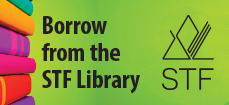Music 10, 20, 30
CP20.3
Compose to express musical ideas developing the use of the elements of music and the principles of composition, respecting cultural contexts.
Indicators for this outcome
| (a) | Explore ways of communicating musical ideas so they can be reproduced by others. |
| (b) | Express musical ideas through composition individually and/or in ensemble settings. |
| (c) | Demonstrate ability to apply the elements of music (i.e., melody, harmony, rhythm, dynamics, form, tone, texture) and principles of composition (e.g., repetition and variation, tension and resolution, balance and unity). |
| (d) | Demonstrate, through rehearsal, an ability to reflect on, refine and revise solo and ensemble compositions. |
| (e) | Apply increased aural skills to making musical decisions for sound compositions. |
Loading...


R026023
Music in Theory and Practice. Volume 1(10th ed.)
This resource focuses on two main themes: the foundations of music and the structural elements of music. Specific topics include: notation, scales, transposition, chords, cadences, melodic organization and harmonic progression.

R017983
Alfred's Essentials of Music Notation: A Practical Dictionary
This resource provides a reference guide for music notation and terminology. Each symbol or term is accompanied by notated samples.

R015897
Rock in the Musical Theatre: A Guide for Singers
This book provides the history and the techniques of the rock musical genre in theatre. It is both theoretical and practical offering theatre singers and drama teachers a source of information on rock styles, their origins and their performance practices.

